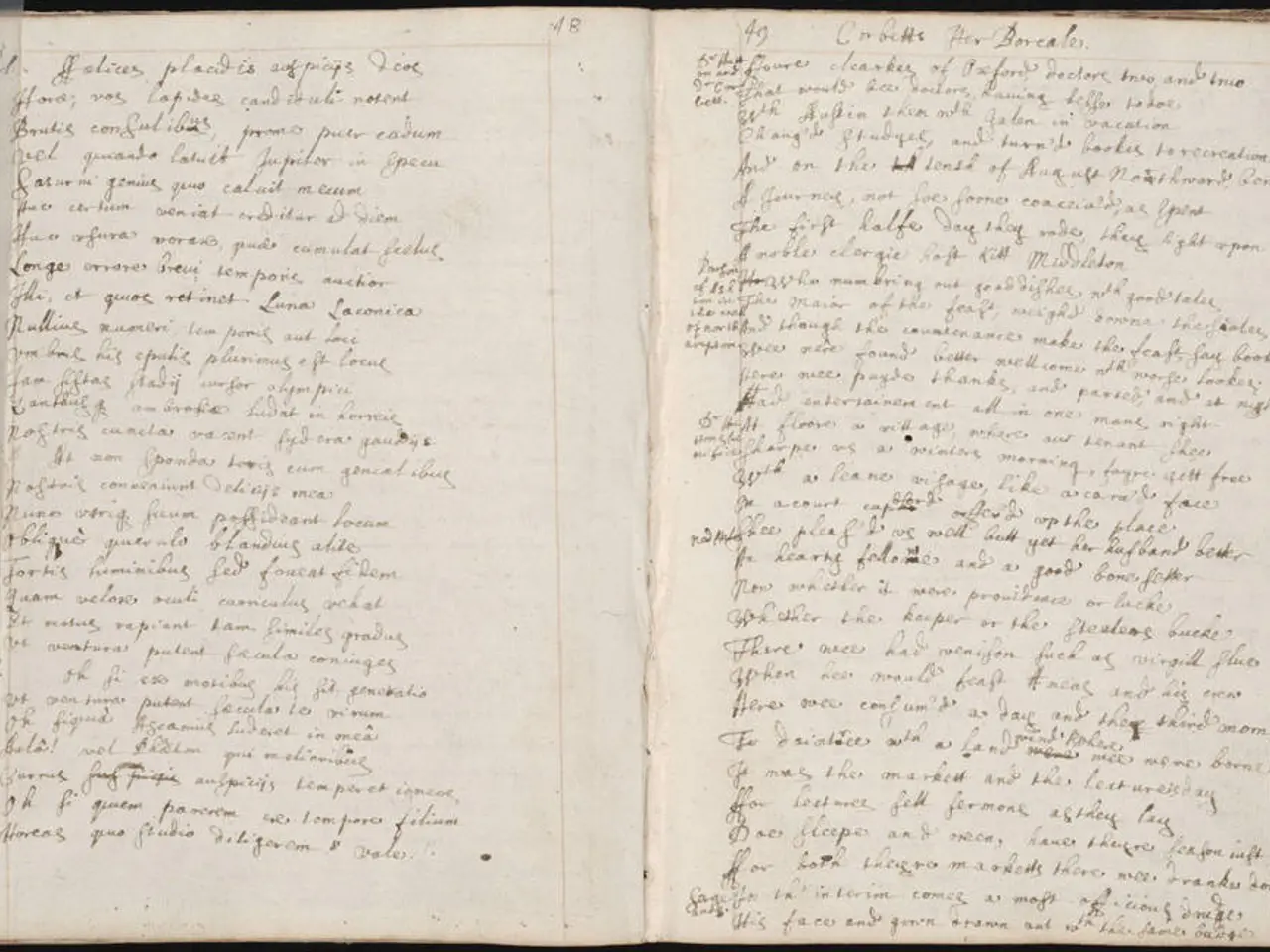Indian Classical Drama Theory and Practices Guides, Accessible for Bachelor's and Master's Degree Students
Classical Indian drama, deeply rooted in the ancient text Natyashastra, offers a unique blend of music, dance, and emotional expression that has stood the test of time.
Written by Bharata around 500 BCE or earlier, the Natyashastra systematically codifies the performing arts of drama, dance, and music, serving as the foundational framework for classical Indian theatrical traditions.
The Natyashastra elaborates on dramatic theory and performance, including detailed rules for music, dance, gestures (mudras), and stagecraft. It describes the six major limbs (aṅgas) of performance—head, hands, chest, sides, waist, and feet—each essential to conveying meaning through physical expression.
A central theoretical construct of Indian drama is the rasa theory. Rasa, meaning "essence" or "flavor," refers to the emotional states evoked in the audience through the performance. The text identifies eight primary rasas, including love, heroism, disgust, and wonder, which actors embody through bhavas (emotions and expressions) to create a holistic aesthetic experience.
The role of music and dance is integral and inseparable from drama within this tradition. According to the Natyashastra, the performing arts combine vocal and instrumental music with rhythmic movements and gestures to narrate stories and evoke rasas. Classical dance forms like Bharatanatyam have evolved directly out of Natyashastra principles and temple rituals, featuring codified hand gestures (mudras), eye and facial movements, and intricate footwork to convey narrative and emotional content.
Contemporary practice of classical Indian drama and dance continues to be deeply influenced by Natyashastra’s guidelines. Traditional art forms like Kutiyattam (a Sanskrit theatre tradition from Kerala) still follow these ancient principles closely, preserving the theatrical expressions, gestures, and rasa theory in performances today. These classical forms incorporate music and dance seamlessly, creating a multi-sensory experience aimed at both entertainment and spiritual upliftment.
Classical Indian drama has shown remarkable adaptability, with forms like Koodiyattam and Kathakali showcasing the richness of its tradition. Kathakali, known for its elaborate costumes, makeup, and facial expressions, originated in Kerala. Koodiyattam, on the other hand, is a traditional Sanskrit theatre form that emphasizes rigorous training in facial expressions, mudras, and dramatic movements.
While the Natya Shastra provides the essential principles of traditional Indian theater, there are differences between classical Indian and Western theatre. For instance, the interaction between actors in classical Indian drama is less frequent compared to Western theatre, and the focus is more on the individual actor's ability to convey the rasa through their performance.
In summary, classical Indian drama is a highly codified, integrated art form where theory, music, dance, and emotional expression converge, with the Natyashastra and rasa theory providing the enduring foundation across centuries. The art form continues to evolve and adapt, preserving its rich heritage while remaining relevant in contemporary practice.
Characters in classical Indian drama, deeply influenced by the Natyashastra, are not just performers but repositories of eight primary rasas, embodying love, heroism, disgust, and wonder. These actors leverage detailed mudras, expressions, and emotional portrayals to resonate with the audience's emotions.
The traditional performing arts of India, as elaborated in the Natyashastra, extend beyond drama, encompassing literature and dance-dramas that offer insight into fashion-and-beauty, food-and-drink, and home-and-garden themes. The intricate costumes and makeup of Kathakali are perfect examples of such fusion.
The Natyashastra's rasa theory has also seeped into education-and-self-development, inspiring an approach that encompasses the emotional states of the learner, serving as a framework for holistic learning and self-transformation.
Traveling across India, one encounters various regional forms of classical Indian drama and dance, such as Koodiyattam and Kathakali, each reflecting the unique lifestyle of its origins. These performances showcase the rich cultural diversity and heritage of the country.
Contemporary classical Indian artists strive to maintain harmony between tradition and modernity, blending age-old principles with innovative themes and expressions. This synergy not only entertains but serves as a testament to the ongoing evolution and relevance of classical Indian drama in today's relationships and society.




